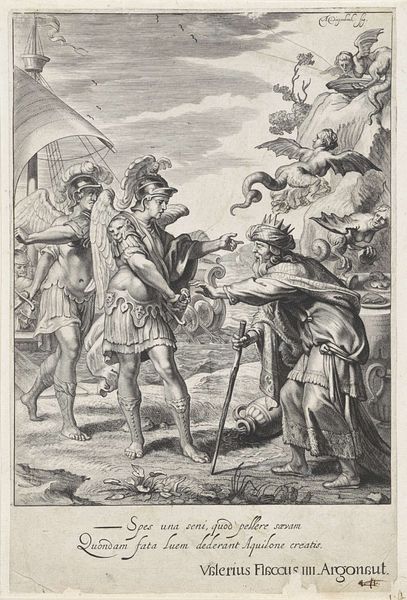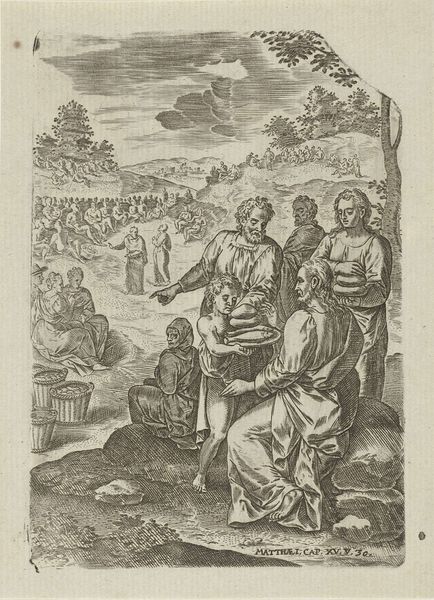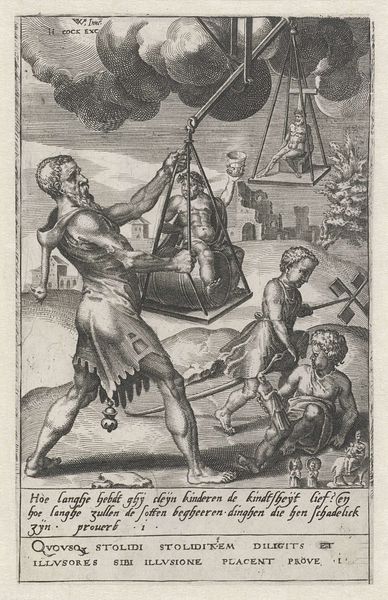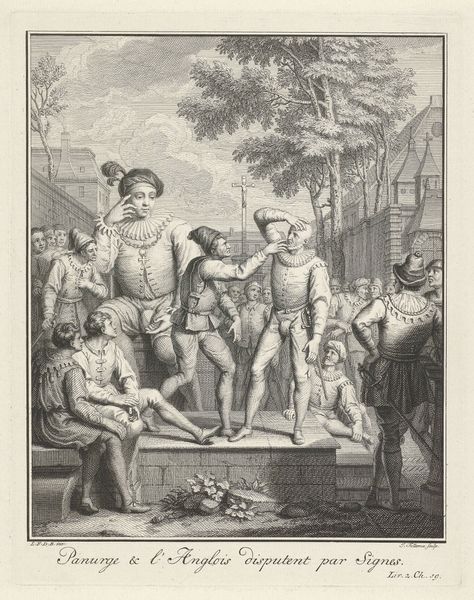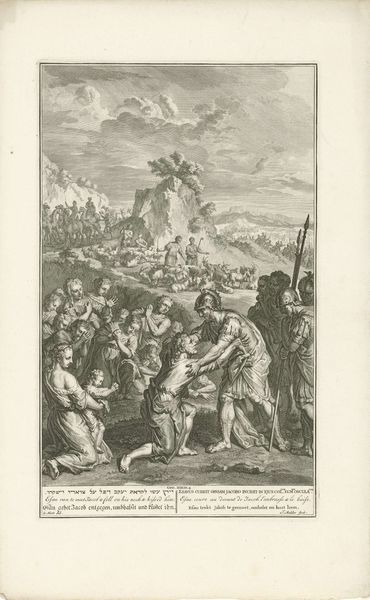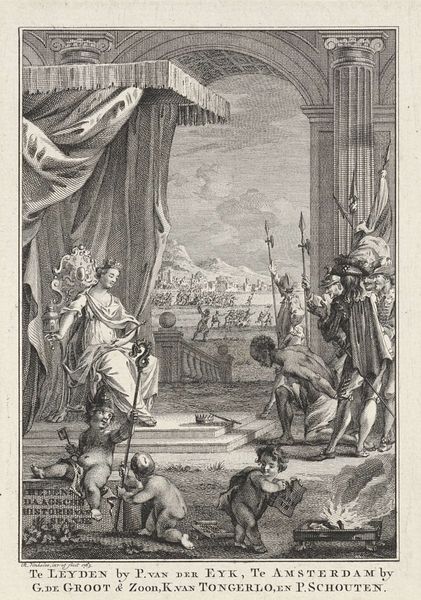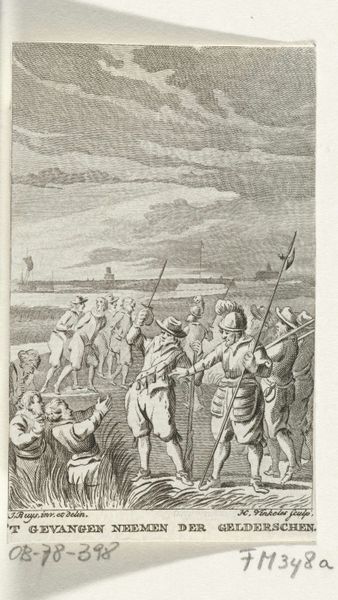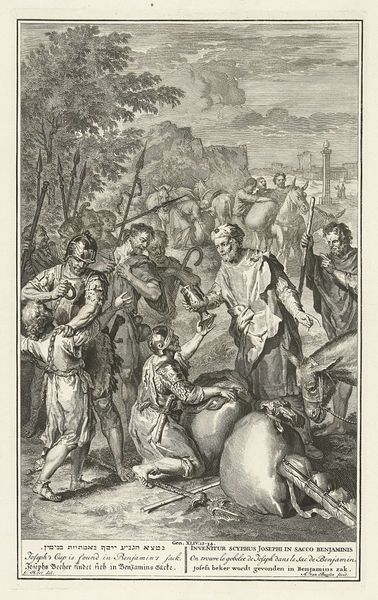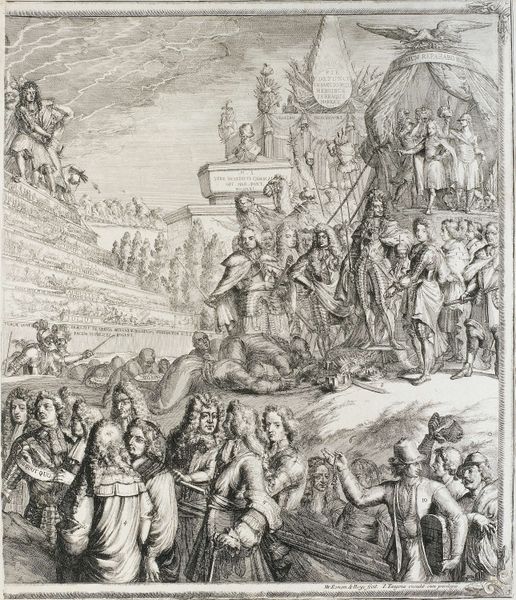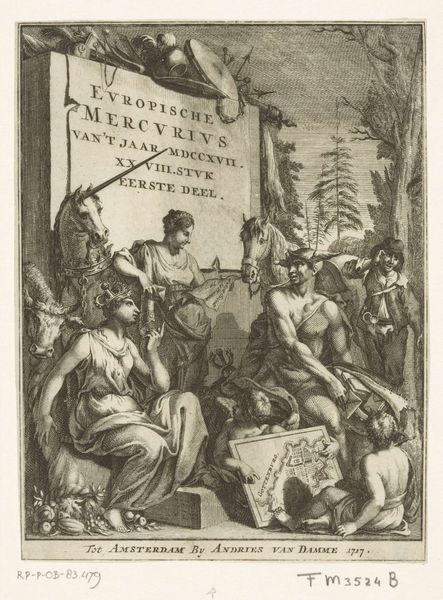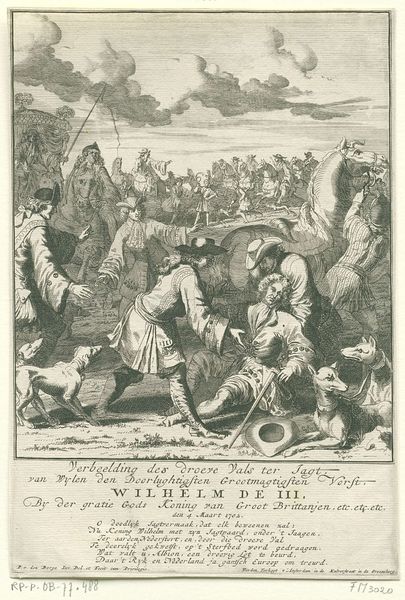
print, engraving
#
narrative-art
#
baroque
# print
#
pen illustration
#
old engraving style
#
landscape
#
figuration
#
pen-ink sketch
#
line
#
genre-painting
#
history-painting
#
engraving
Dimensions: height 350 mm, width 220 mm
Copyright: Rijks Museum: Open Domain
Joseph Mulder made this print, Ruth Gleaning in the Fields of Boaz, in the Netherlands around the turn of the 18th century. The story depicted is from the Hebrew Bible, in which the widow Ruth, gleans the fields during harvest to provide for herself and her mother-in-law. Mulder’s image presents a pastoral scene of labor and bounty, but it's also framed by the artist’s contemporary social conditions. The Dutch Republic at this time was a major commercial power, with complex systems of labor and patronage. The print hints at these social relations, showing Boaz overseeing the work, and the laborers harvesting the fields with sickles. Institutions such as the Dutch Reformed Church also influenced the interpretation of biblical scenes. Mulder would have assumed his audience knew the story. To fully understand this print, we need to study its cultural and religious contexts, using resources such as period texts, sermons, and economic records. In this way, we can see art as a product of its time.
Comments
No comments
Be the first to comment and join the conversation on the ultimate creative platform.

